In this article, we will cover some interesting facts about the creation of the most popular banknotes in the world
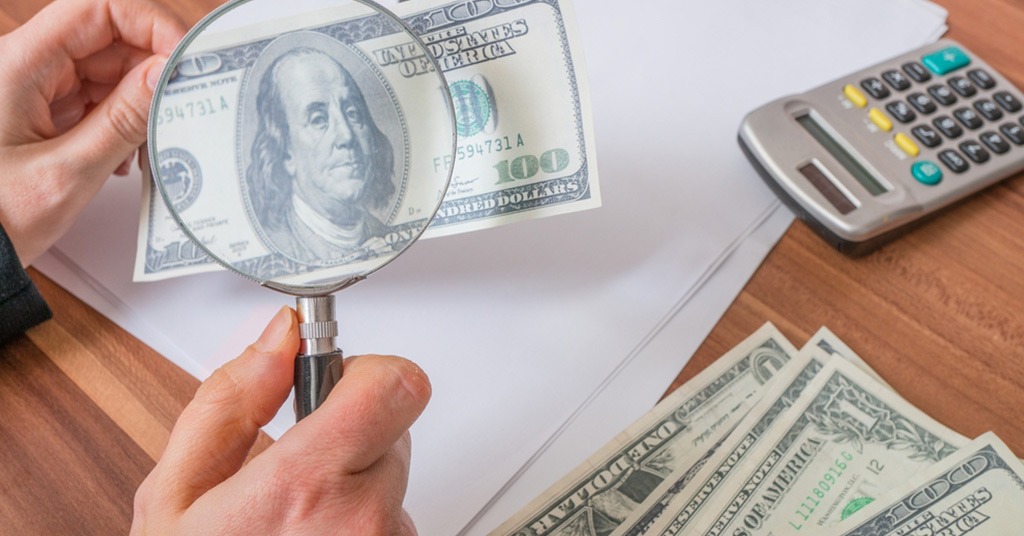
Pounds, dollars, euros: how money is made? Source: shutterstock.com
The history of money dates back to the ancient barter exchange. However, the real money as we know it became possible when people started to attach the significance of value to precious metals. In the Middle Ages, the keeping of values with goldsmiths was common. The goldsmith, as a guaranty, delivered a receipt. With time, these receipts came to be used to make payments, circulating from hand to hand, giving origin to paper money. It took around 2000 years for physical value to be substituted by a symbolic one. That allowed coins to evolve to banknotes.
Today, the central national banks make everything possible so that the issued money are unique, hard-to-forge, and reflect some cultural authenticity of the country. Some occasional misprints or special coin editions become adornments in the private collections. In this article, we will cover some interesting facts about the creation of the most popular banknotes in the world.
British pounds

Notes can be exchanged for other Bank of England notes of the same face value. Source: shutterstock.com
If you look closely at any Bank of England banknote, you will notice it contains the ‘promise to pay’ inscription. This term dates back to the time when British notes represented deposits of gold. At that time, a citizen could exchange one of the banknotes for gold to the same value. For example, a £5 note could be exchanged for five gold coins, called sovereigns. Today, the ‘promise to pay’ means that notes can be exchanged for other Bank of England notes of the same face value. The massive exchanges took place quite recently when the new polymer notes substituted the paper ones.
The new notes had been developed for 3 years and cost £70million to the Bank of England. Polymer banknotes last longer, so they are more environmentally friendly than paper banknotes. The waste from old polymer banknotes is turned into pellets before being transformed into new plastic items, such as plant pots. They are also more practical, being prone to dirt and moisture, and stay cleaner overall. In addition, the polymer material allows to include enhanced security features, which make banknotes harder to counterfeit.
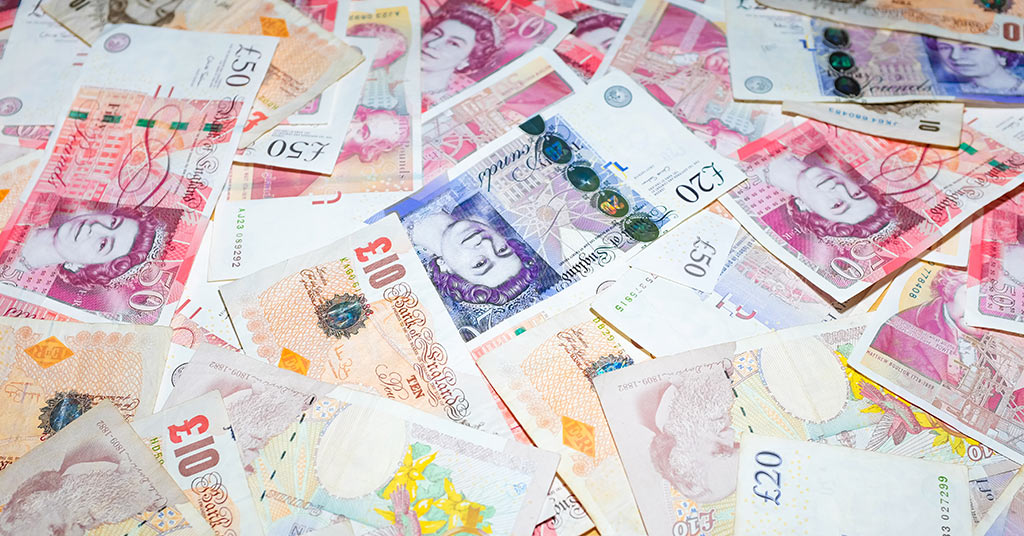
The new notes had been developed for 3 years. Source: shutterstock.com
The polymer banknotes are made of a thermoplastic polymer called biaxially oriented polypropylene (BOPP), which is widely used in goods ranging from carpets to stationary folders. The Bank uses a patented technology where 82-foot towers melt the chemical and mold it into room-sized film ‘bubbles’. Two layers of ink (usually opaque white) are applied to each side of the note, except for any areas intentionally left clear. Next, polymer substrate roll is cut into sheets to suit a flat-sheet printing press. Later, traditional printing processes are used. Finally, notes are coated with a protective varnish.
The whole process is performed by Innovia Security, the United Kingdom-based producer of the high-performance film. They produce the substrate, branded ‘Guardian’, at a new £40m facility in Wigton, England. Innovia’s polymers are used to make 99.9 percent of the 50 billion plastic notes already in circulation in over 30 countries around the world.
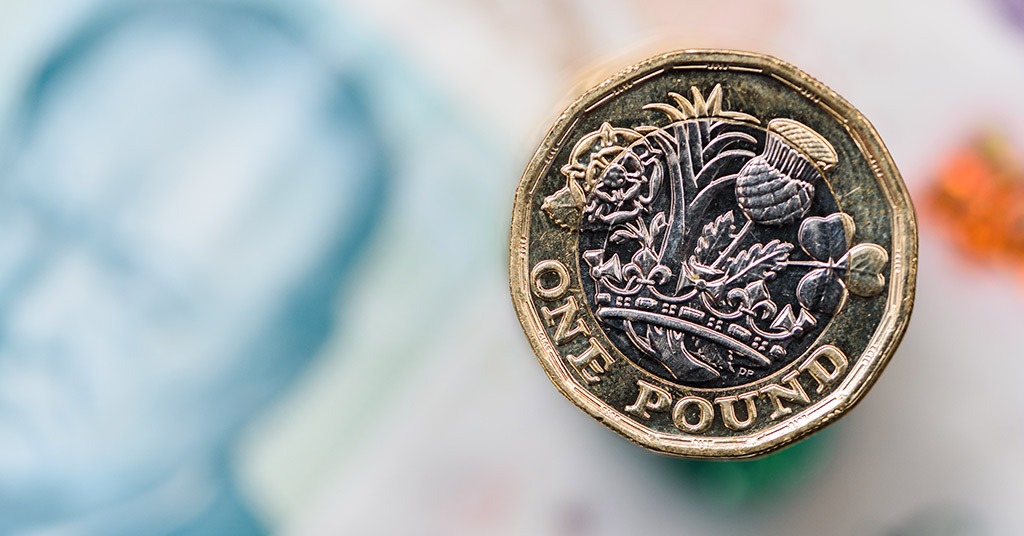
The whole process is performed by Innovia Security. Source: shutterstock.com
The serial numbers on British banknotes can spark huge interest among banknote collectors. When the Bank of England releases a new banknote, they hold back some of the first printed notes with especially low or symbolic serial numbers. They donate these to people and institutions that were involved in the development of the note or the members of the royal family.
A number of banknotes with lower serial numbers gets auctioned to raise money for charity. For example, the auction of fivers with low serial numbers raised £194,500. This was split between three pre-selected charitable organizations.
Dollars
According to the Bureau of Engraving and Printing (BEP), the US paper currency is made up of 75% cotton and 25% linen. During Fiscal Year 2009, over six billion bills of all denominations were printed in the United States, consuming 21,476 bales of cotton. The total dollar value of these bills was two hundred and nineteen billion dollars or $21,290.55 per pound of cotton.
Because of the high price of cotton in 2010, the cost of making a note increased by 50% compared to its cost in 2008. So the price of cotton actually has a big impact on the cost of making paper dollar bills.
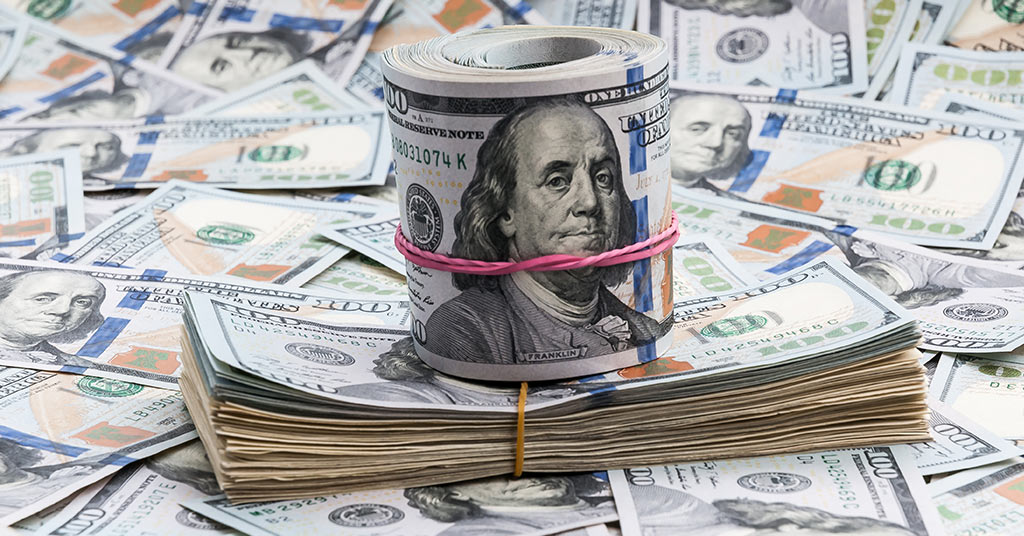
The process of making a bill takes about 4 months. Source: shutterstock.com
The process of making a bill takes about 4 months. Hundreds of hours of labor go into making a dollar bill, from the special process used to create the paper it’s printed on, to the printing, analyzing, cutting, packaging, and shipping to banks. Bills over $1 have additional red and blue strands woven in for security purposes. Hence, they are made even longer. For the $100 note, a 6mm wide 3-D security ribbon is woven into the paper.
The image of the dollar bill is engraved onto giant steel plates. These sheets of soft steel are then curved slightly and bolted onto a printing cylinder. Ink is added and then wiped off, leaving only ink in the engraved, recessed areas of the plate. Around three tons of special ink are used a day. All the inks appearing on U.S. currency are specially formulated and blended by the BEP.
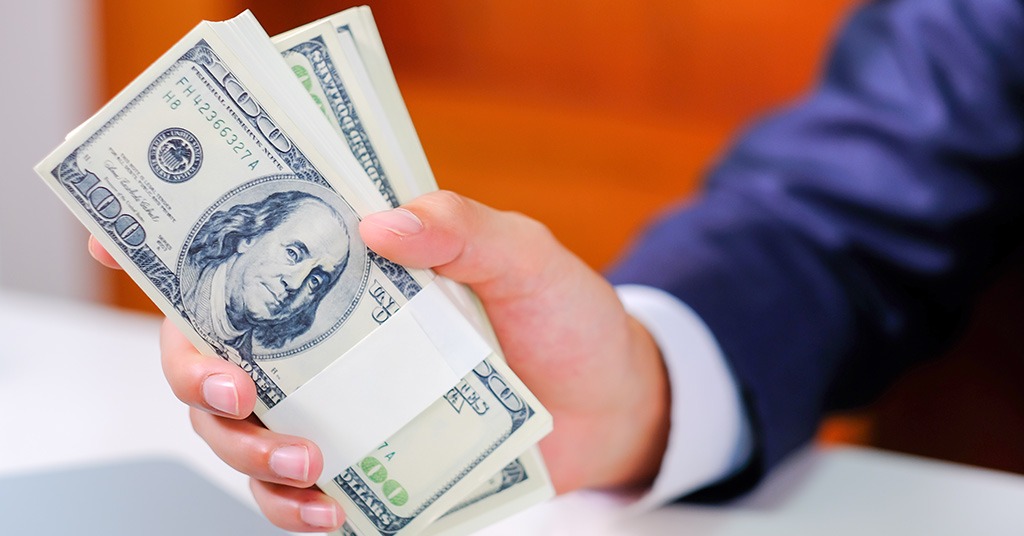
The image of the dollar bill is engraved onto giant steel plates. Source: shutterstock.com
There used to be $500 and $1,000 bills circulating as regular currency. They were useful for large transactions (buying a business, buying real estate, etc.) as it might have taken days to clear a check. By the 1960s, the clearing process was facilitated, and there was a general sense that the main reason someone might use these sorts of high-denomination banknotes was to engage in illegal activities — drug deals, bribes, political payoffs, etc.
In 1969, President Nixon ordered the $500 and $1,000 bills withdrawn from circulation in order to make corrupt payments harder. Nevertheless, the legal tender of U.S. currency means that the public can rely on money that has ever entered circulation at its face value. So you can still use a $500 or $1,000 bill if you have one. People actually do use them sometimes, mostly as a way to show off.
Euros
The biggest benefit of the euro is that it is managed by the European Central Bank. The ECB has to balance the needs of all the member nations and therefore is better protected from political pressure to inflate or manipulate the currency to meet any particular nation’s needs.
Since 2002, euro banknotes have been produced jointly by the national central banks (NCBs) of the euro area. Some national central banks use their own printing works to produce euro banknotes (mainly Austria, Italy, Ireland, France, Spain, Greece, Belgium, Portugal). Remaining central banks procure banknotes in one of the many commercial printing works.

The raw material for the banknotes comes from different regions of the world. Source: pexels.com
The raw material for the banknotes comes from different regions of the world. Cotton is the basic ingredient in euro banknote “paper”. The selected fibres cannot be used by the textile industry, as they are too short for weaving, so they are bought by paper mills, which turn them into cotton paper.
The cotton fibres are bleached in the water at high pressure and high temperature. The paper pulp is then fed into a paper machine. Security paper forms the basis for producing banknotes, and certain security features, such as watermarks or embedded threads, are integrated into the paper itself. The watermark is obtained by varying the paper thickness.
Banknote paper is distributed to the 14 high-security printing works in Europe that produce euro banknotes. They use different printing methods to put the necessary images and symbols on the notes. The hologram stripe or patch is hot-stamped onto the banknote paper. The banknote serial numbers are printed with the help of numbering boxes.
To ensure the consistent quality of banknotes, the ECB developed a common quality management system. Throughout the production process, hundreds of manual and automated tests are performed to meet the ECB’s standards. For example, the banknotes undergo tearing, soiling and even washing machine tests to measure their resistance.
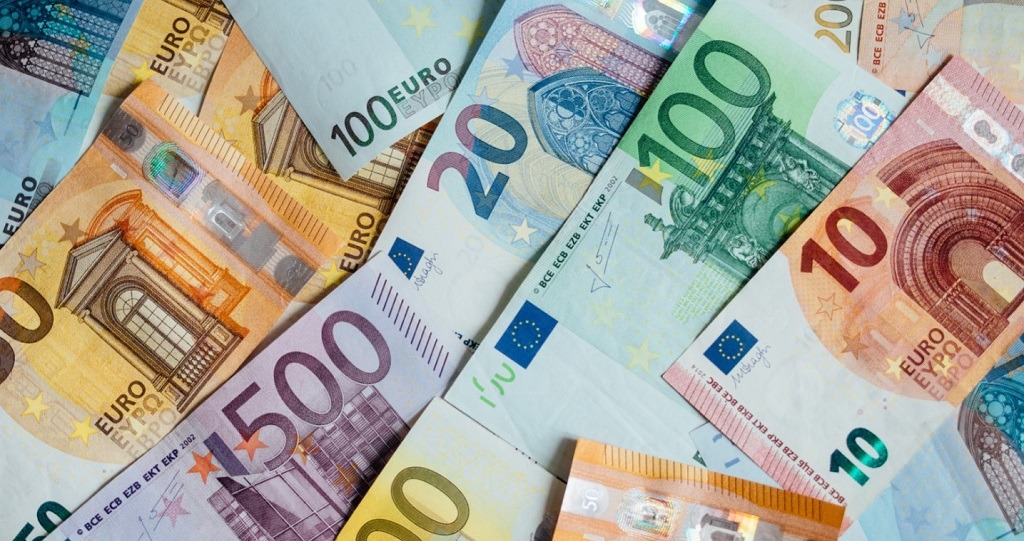
The ECB developed a common quality management system.. Source: shutterstock.com
Responsibility for minting euro coins lies with the national governments of the euro area countries. However, the overall value of the coins to be put into circulation annually has to be approved by the Governing Council of the ECB.
The adopters of the euro chose to use copper in each of the coins introduced due to its long history in money-making. Copper’s excellent resistance to corrosion made it appealing for the euro designers who required an average lifetime for the coins to be 30 years.
Copper’s malleability allows making clear images and distinct edging. The latter is especially important for the visually impaired. Each coin denomination has a unique design to facilitate tactile recognition.
Copper’s electrical conducting properties are critical to providing security features such as engraving electronic signatures. Those are necessary for use in the vending and coin handling machines across Europe.
Another attribute that made copper the metal of choice for the euro currency is its low risk of inducing an allergic reaction. In an era of sustainable development, the total recyclability of copper made it even more attractive. Old coins sent back to various metal refining facilities are then re-used. CRU estimated that 85,000 tonnes of copper were recycled. As for highly-recyclable copper, around 80% of all the material mined over the centuries is still in use today.
New €100 and €200 notes were released into circulation this spring, aimed at deterring counterfeiters. The new €100 and €200s follow the already overhauled €5, €10, €20, and €50 bills. Old notes will still be valid, but will eventually be collected and replaced by central banks.
SEE ALSO: Which countries use polymer banknotes









